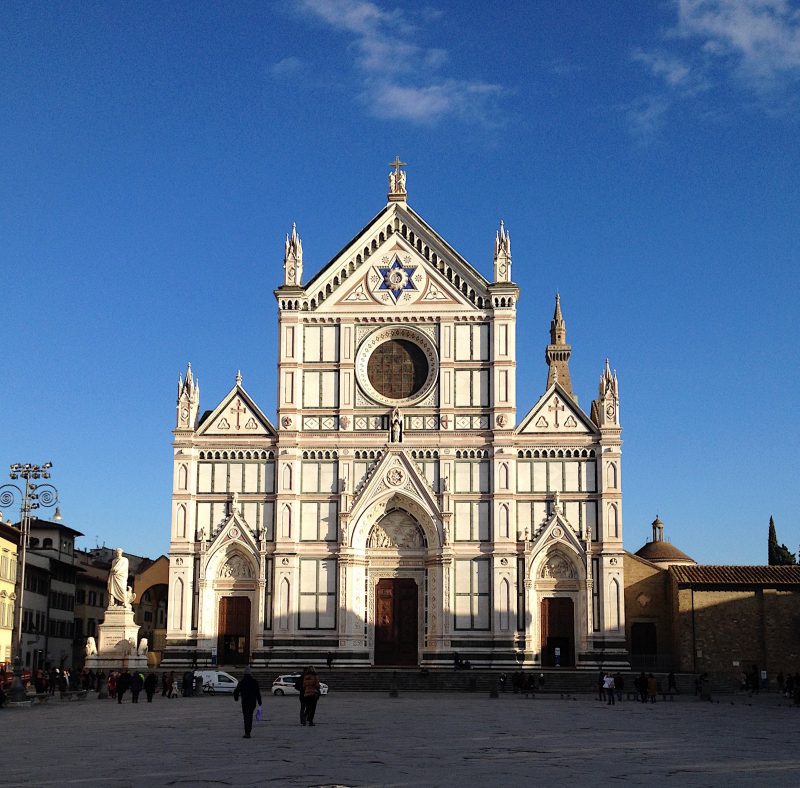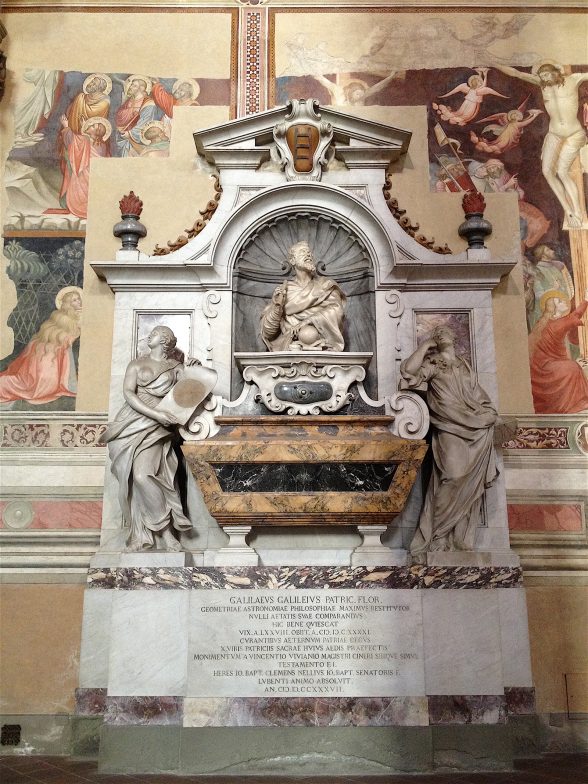In October 2017, a Spanish tourist and his wife were visiting the Basilica di Santa Croce in Florence, when a chunk of stone masonry suddenly fell some 66 feet onto the man, killing him. As I was later told by one of Santa Croce’s guards, the scene was chaotic and tragic. Various newspapers reported that the fragment, which measured six by six inches and gave support to a beam, had most likely been cemented into place in the early 14th century during the Basilica’s construction. That falling stone turned out to be a looping sling shot that rippled through history.

In March 2018 I wandered through the same vast Basilica near the banks of the Arno River, considering this bizarre death, and, I should note, keenly aware of any and all noises emanating from above me. While not religious in any way, I’ve always loved spending time in Catholic churches wherever I travel. These quiet, often cavernous refuges from the turbulence of the world, merge art and death into a visual history of political power in the West.
Designed by Arnolfo di Cambio (1240 – 1310), the neo-gothic Santa Croce is just such a time capsule for Western culture. Construction of the basilica, which takes its name from a splinter of the Holy Cross donated by King Louis of France in 1258, began in 1296. Its collection of visual art and architectural treasures is perhaps only rivaled by its famous mortuary.
Laid to Rest
Santa Croce’s stone floors are a patchwork of marble reliefs worn smooth by the faithful and hordes of tourists, though they still serve to secret the bones of Santa Croce’s wealthiest patrons— believers who paid “indulgences” to be close to God, and purchase a direct path to heaven. Tourists – like me– will kneel down to trace their fingers over their tombstones, the carved texts barely visible.
Wary of loose stones, rafters and mischievous acts of a supreme being, I soon found myself in front of the monuments and tombs of some of Italy’s greatest artists, scientists, writers and statesmen. Galileo, Machiavelli, Enrico Fermi, Marconi and Michelangelo are all buried here. How strange and oddly beautiful, I thought, that so many giants of history found themselves entombed in a cold stone church in Italy. Perhaps the Spanish tourist had similar thoughts shortly before his own demise.
Stations of the Cross
The bulk of the Santa Croce’s holdings consist of paintings portraying Jesus’s life of faith, and more importantly his suffering and death on the cross. Like the tombstones and crypts, these images call our attention to the symbolic importance of death.The Descent of Christ into Limbo (1552) by Agnolo Bronzino (1502-1572), one of Santa Croce’s most well known works, shows Jesus after the crucifixion and prior to the resurrection (post-death and pre-rebirth). The four-meter-high oil on wood painting is considered one of the finest examples of Italian Renaissance mannerism.

Depicting Jesus stepping towards “Limbo,” that mystery space on the edge of hell, Bronzino’s masterpiece shows Christ surrounded by the faithful – mostly naked and beautiful Florentines. In his time, the artist was roundly disparaged as lewd for combining death and flesh in a highly erotic style. In its own 2010 resurrection of Bronzino, The New York Times called him “a master of the mannerist erotic scene” for an image of Christ that may have turned on thousands over the centuries.
Another attraction is the Cimabue crucifix (circa 1287) which hung in the Basilica from the late 1400s until 1966, when the Arno river overflowed its banks, flooding the church and severely damaging many of its treasures, the crucifix among them. Now on display in the sacristy of the church it shows Christ bleeding, slumping, dying. There is nothing idealized here; the pain is quite visible.
Glass Boxes
Catholic churches are symbolic and literal doorways to heaven, and as such, death tourism has always been a part of their subtext. Some years ago in an almost empty church in Venice I was shocked to discover the corpse of a saint in a glass coffin. In Rome, I discovered that Saint Peter’s, the world’s largest church, designed in part by Michelangelo and Bernini, was loaded with more than 100 corpses. Pope John XXIII, who died in 1963, was entombed there in a glass tank for all the world to see. His body is said to be “incorruptible,” and has not decomposed; perhaps for that reason this living death is also one of Rome’s main attractions.
Though Santa Croce has no such marvels, tourists still head there to see the massive tombs of the Western World’s geniuses — to ponder their dust and bones, and most certainly their own.





